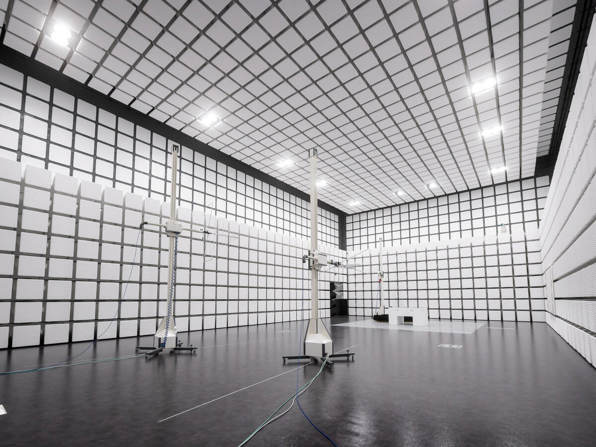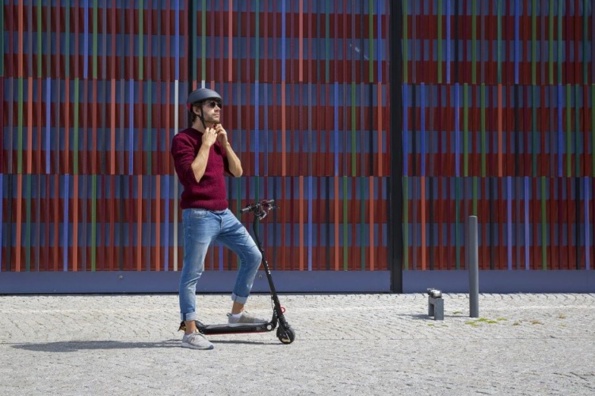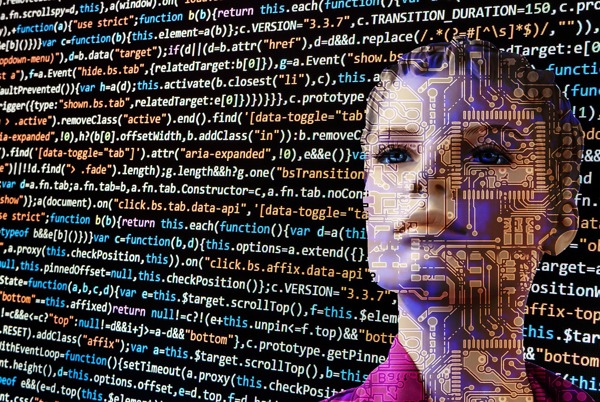CET&D: Could you tell us about your role at UL Solutions?
Jilani: I am the global director of consumer technology at UL Solutions. This role includes leading and developing new technology and innovation for AR/VR/MR equipment, audio/video, batteries, consumer electronics, consumer/commercial robots, data centers, electronic controls, information technology, laser/LED, micromobility and printed circuits.
Serving the UL Solutions mission of working for a safer world, my colleagues and I address global industry matters, such as mitigating risk through product evaluation, testing and certification. I also represent UL Solutions in various industry trade groups and am a key contact for manufacturers, regulators, retailers, and other product safety and regulatory stakeholders worldwide.
CET&D: How did you come to the role? Tell us a little about your background.
Jilani: After completing a master’s in computer engineering and working at a medical company in Chicago, I joined UL Solutions in 2005 as a project engineer in electronic control systems. I evaluated and tested the products customers submitted for certification, such as smart energy management equipment. I also provided engineering support as the customers resolved technical issues with their products or designs. In 2008, I took on operational excellence responsibilities. I became one of the company’s first Lean Six Sigma Black Belts, providing global support on various engineering and laboratory improvement projects.
In 2012, I became the North American program manager for portable and wearable batteries and battery cells. I created a regional team that offered certification services for products such as the battery cells used in electric vehicles (EVs). In 2015, I became the global business manager for EVs, light EVs, battery and charging systems. Then, in 2018, I took on the current role of global director for Consumer Technology.
CET&D: Can you provide an overview of UL Solutions’ role in the consumer electronics industry?
Jilani: The UL Solutions Consumer Technology team provides electromagnetic compatibility, energy efficiency, global market access, performance, reliability and safety testing, and certification for consumer electronics. We also provide regulatory support and market claim validation services. UL Solutions also offers infrastructure services, including services for information technology and data centers that support consumer electronics.

UL Solutions' anechoic chambers are used for EMC and other forms of testing. Picture: UL Solutions
We can help customers with various products, including discreet components and materials such as laminates, lasers, lithium battery cells, and printed circuit boards to end products like earbuds, smart watches, mobile phones, tablets, e-bikes and e-scooters. We even provide services for significant assets like modular data centers or liquid and immersion-cooled information technology.
CET&D: What are the most challenging aspects of your job? What are the most rewarding?
Jilani: Keeping constant on UL Solutions’ mission is both the most rewarding and challenging. In one way, it’s natural for engineers and professionals at UL Solutions to believe in working for a safer world. It’s also a 24-7 responsibility to promote a safer, securer, and better sustainable living and working environments for people. We do that through data, science and hazard-based safety testing.
Another critical challenge is that in many countries, not all vested stakeholders have considered product safety as serving public safety. It’s often only realized after significant loss of life or property damage. UL Solutions provides independent and impartial testing for stakeholders and the market so that we can help companies get ahead of safety, security and sustainability issues before they become widespread crises.
CET&D: Could you explain the testing and certification processes that consumer technology products go through at UL Solutions?
Jilani: A manufacturer seeking certification of a consumer electronic, such as a wireless soundbar, would contact UL Solutions to ask for the appropriate testing to demonstrate their product meets relevant safety requirements. We then provide a summary of the regulations per country where the manufacturer wants to sell their product. We also offer recommendations and one of the best practices to alleviate customers’ technical doubts.
Next, UL Solutions provides a quote for all services, pricing, estimated turnaround times, documentation needed, and required samples to the manufacturer. Once the quote is accepted, a conformity assessment engineer for product safety and other experts for electromagnetic compatibility, energy efficiency, wireless or market access will be assigned their specific service to be delivered.
Ongoing communication and regular interactions with the manufacturer happen as each evaluation and test plan is delivered. Any issues or non-conformances are reported immediately by UL Solutions staff, and we work closely to provide support and resolve alongside the manufacturer. Test report(s) and certification(s) can be issued when all aspects of the particular standard have been met. This forms the technical file for the manufacturer coming from an independent and impartial third-party. If any future design change takes place, it becomes the base file to compare against and update accordingly whenever the product goes through a design iteration in the future.
CET&D: How does UL Solutions keep up with the rapid advancements in consumer technology to ensure safety standards are met?
Jilani: UL Solutions focuses heavily on technical talent and laboratory facilities and their capabilities and global footprint. The company stays up-to-date and current on technological and regulatory advancements so we can provide one of the best services to our customers and the markets they wish to enter worldwide.
We are one of the only testing, inspection, and certification companies that employs an entire department of principal engineers, research engineers, and scientists and maintain a brand protection department that helps checking that a product that bears the UL Mark is legitimate. These investments go back to our mission, working for a safer world. We are a purpose-driven organization, and providing impartial and independent third-party services is how we deliver on our mission.

UL Solutions helped developed standards for e-scooters. Picture: Pixabay
CET&D: Can you offer any past examples of the integral part UL Solutions has played in the history of consumer tech product safety?
Jilani: The lithium battery cell safety story is often cited as an example of UL Solutions’ role in reducing risk and safeguarding the public. Almost every consumer-facing electrical and electronic industry has developed end products that utilize lithium technology. UL Solutions principal engineers wrote some of the first standard drafts that became accredited consensus UL Standards used by industry professionals. Even the lithium cell standard was first published in 1985, years before this type of battery was commercialized.
In 2016, UL Solutions engineers and scientists chaired the development of hoverboard and e-scooter standards that were credited as ending the ‘Wild West’ of shoddily manufactured hoverboards. Most recently, UL Solutions safety certification and other accredited certification organizations became a requirement for New York City as they faced issues due to poorly made e-bikes, e-scooters and other micromobility equipment in the city over the past few years.
CET&D: What emerging technologies or innovations in the consumer tech industry are you currently keeping a close eye on in terms of the safety and compliance challenges they might present?
Jilani: An accredited national consensus Standard, UL 8400, the Standard for Virtual Reality, Augmented Reality and Mixed Reality Technology Equipment, was recently published for VR/AR/MR equipment safety. UL Solutions technical leadership played a critical role in the standard development. We are concerned that head-mounted displays can have long-term effects and hazards to users.
UL Solutions announced the first product to be certified to this standard in October 2023. We are hoping stakeholders, as well as leading manufacturers, embrace the standard to reduce the risk of potential widespread issues before they occur. We encourage all manufacturers to be certified to the new standard and supported by industry associations such as the VR/AR Association.
We also provide services for the consumer and commercial robot industry to help provide for a safer integration of robot technology. Each robot’s size, weight, speed, and use case provides an operational design domain determining the hazard level to mitigate. We have identified several types of robots that require deep understanding to reduce risk, especially when near potentially vulnerable people such as children, those with disabilities or older adults. UL 3300, Outline of Investigation for Service, Communication, Information, Education and Entertainment Robots, demonstrates how we are addressing the increasing complexities of consumer and commercial robots, as showcased in the active participation and leadership in robot safety standards development, technical committees and industry working groups.

Jilani and his colleagues are following closely developments in AI. Picture: Pixabay
We also see a rise in deployed large-scale charging infrastructure for e-bikes, e-scooters, and other micromobility equipment. These charging stations are being deployed rapidly, in public spaces near EV charging infrastructure or even closer to consumers in multi-occupancy buildings. This presents safety concerns and risks, and we felt it necessary to publish requirements earlier this summer to have stakeholders and manufacturers consider. UL 4900, Outline of Investigation for Micromobility Charging Equipment, addresses and helps mitigate the risk of micromobility charging equipment.
CET&D: Does the growing complexity of consumer tech with developments like AI and interoperability make the job of certification and testing more challenging?
Jilani: The short answer is yes. The United Kingdom recently hosted one of the world’s first AI Safety Summits, where the CEOs and business leaders of leading AI companies were attending to determine the framework of AI regulation. The UL Solutions team is following these developments closely. For example, we provide commentary and input to government agencies seeking our feedback on AI and interoperability worldwide. In the future, the consumer electronics industry will need independent and impartial certification of AI and interoperability. Already, such a regulation has passed for interoperability and cybersecurity in the European Union, with UL Solutions ready to address the needs of manufacturers.
CET&D: What do you see as the big challenges for testing and certifying electronics going forward?
Jilani: The first challenge already upon us is lithium technology, which is prevalent in many consumer products. Lithium batteries have become ubiquitous, and unfortunately, the fire and explosion incidents from all product types have dramatically increased. Whether it’s an earbud, e-bike, or home energy storage, there is a risk of thermal runaway. It’s important to know that the United Nations considers lithium batteries dangerous goods, and any product containing lithium batteries is a dangerous good. That is why specific transportation regulations are set up for products containing lithium batteries. At the same time, the transportation sector has established safety requirements.
It is surprising and concerning to see many countries worldwide do not have consumer product safety requirements for lithium battery-operated products. This is a challenge for public safety, and UL Solutions shares concerns with safety advocates that product safety to address public safety should be in place. What also intersects with the safety of lithium battery-operated products is the recent right-to-repair regulations and proposed laws worldwide. We encourage right-to-repair advocates to learn about the dangers of replacing lithium batteries in products and how aftermarket batteries should be safety-certified.
CET&D: If you were to offer advice to someone launching a career in electronics testing and certification now, what would it be?
Jilani: Being in the electronics testing and certification industry is fascinating and inspiring. It also offers a way to see the world’s manufacturing processes, know the latest technological advancements and see what’s coming next to the market. That is exciting and fun for those who are passionate about consumer technology. It is also critical to know that evaluating, testing, and certifying products is a commitment to learn and be knowledgeable in specific areas of expertise. It’s important to have breadth of knowledge, but certainly more valuable to many manufacturers and stakeholders is to have depth of knowledge, expertise and hands-on skills in the specific service and technology you offer them.
UL Solutions customers truly value our technical expertise, both in its depth and breadth. This takes decades of investment and involvement in advancing safety and innovation. It’s also critical to be impartial, trusted and transparent when working with thousands of manufacturers and to have cultural appreciation for everyone worldwide.

